#21 February 1885
Photo










The newly completed Washington Monument was dedicated on February 21, 1885.
#Washington Monument#dedicated#21 February 1885#anniversary#US history#National Mall#US Capitol#Reflecting Pool#architecture#landmark#cityscape#tourist attraction#original photography#summer 2009#Washington DC#Robert Mills#Ulysses S. Grant Memorial#public art#sculpture#tree#flora#nature
5 notes
·
View notes
Text
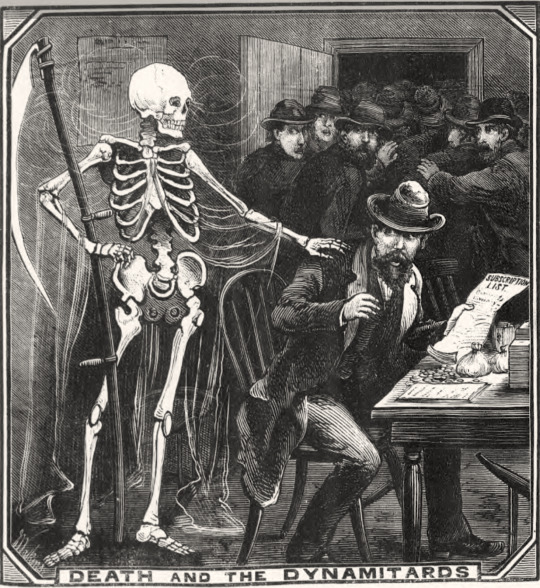
Engraving in the Illustrated Police News, London, 21 February 1885, concerning the activities of the dynamitards.
21 notes
·
View notes
Text



February 7th 1837 saw the birth of James Murray, first editor of the Oxford English Dictionary.
A couple of things that I love about this, 1; a Scot was the first editor of the most famous English dictionary, a 2; the picture of Murray, he just looks the part!
He was certainly something of a prodigy as a child, despite his humble background. Born in the Borders village of Denholm, near Hawick, the son of a tailor, he reputedly knew his alphabet by the time he was eighteen months old, and was soon showing a precocious interest in other languages, including—at the age of 7—Chinese.
Thanks to his voracious appetite for reading, and what he called ‘a sort of mania for learning languages’, he was already a remarkably well-educated boy by the time his formal schooling ended, at the age of 14, with a knowledge of French, German, Italian, Latin, and Greek, oh and of course Gaelic, along with a range of other interests, including botany, geology, and archaeology. After a few years teaching in local schools—he was evidently a born teacher, and was made a headmaster at the age of 21—he moved to London, and took work in a bank.
e soon began to attend meetings of the London Philological Society, and threw himself into the study of dialect and pronunciation—an interest he had already developed while still in Scotland—and also of the history of English. In 1870 an opening at Mill Hill School, just outside London, enabled him to return to teaching. He began studying for an external London BA degree, which he finished in 1873, the same year as his first big scholarly publication, a study of Scottish dialects which was widely recognized as a pioneering work in its field and was the first ever sustained history of the Scots tongue.
Only a year later his linguistic research had earned him his first honorary degree, a doctorate from Edinburgh University: quite an achievement for a self-taught man of 37.
In 1876 Murray was approached by the London publishers Macmillans about the possibility of editing a dictionary, he accepted the challenged and it was generally thought the publication would take around ten years to complete and run to 6,400 pages, in four volumes, he undertook the work while still teaching at Mill Hill, although he did enlist help in several assistants.
Five years later- no- he hadn't finished it, he was a genius but not that much, they published the first volume, A-Ant, to steal the words from a future film, they were going to need a bigger book!" The team sent out the call for volunteers all across the country. one American man, William Chester Minor, even responded from his prison cell in Broadmoor while serving a life sentence for murder. still suffered from paranoid delusions, some saw his work on the Oxford English Dictionary as a form of therapy. Minor became a regular collaborator with Murray as he sent his notes to the editor every week for 20 years. Every letter Minor signed with the closing, “Broadmoor, Crowthorne, Berkshire.
Murray soon had to give up his school teaching, and moved to Oxford in 1885; even then progress was too slow, and eventually three other Editors were appointed, each with responsibility for different parts of the alphabet. Although for more than three-quarters of the time he worked on the OED there were other Editors working alongside him—he eventually died in 1915—and although he had a staff of assistants helping him, it is without question that he was the Editor of the Dictionary.
It was not until 1928 that C. T. Onions and William Craigie finally finished the main text. In terms of the methodology he developed, The Oxford English Dictionary is largely Murray's creation; as the ‘Historical Introduction’ to the OED states, ‘to Murray belongs the credit for giving it, at the outset, a form which proved to be adequate to the end’.
In his private life Murray married an Ada Agnes Ruthven and they found time to have 11 children together, all of whom reached adulthood, and unusual occurrence back then. Some even helped him in the compilation of the OED. The third pic is great and shows him astride a huge ‘sand-monster’ constructed on the beach during one of the family’s holidays in North Wales.
He was never made a Fellow of an Oxford college, to their shame, and only received an Oxford honorary doctorate the year before his death.He died of pleurisy on 26 July 1915 and requested to be buried in Oxford beside the grave of his best friend, James Legge.
32 notes
·
View notes
Text

Sacha Guitry, February 21, 1885 – July 24, 1957.
18 notes
·
View notes
Text
The napoleonic marshal‘s children
After seeing @josefavomjaaga’s and @northernmariette’s marshal calendar, I wanted to do a similar thing for all the marshal’s children! So I did! I hope you like it. c:
I listed them in more or less chronological order but categorised them in years (especially because we don‘t know all their birthdays).
At the end of this post you are going to find remarks about some of the marshals because not every child is listed! ^^“
To the question about the sources: I mostly googled it and searched their dates in Wikipedia, ahaha. Nevertheless, I also found this website. However, I would be careful with it. We are talking about history and different sources can have different dates.
I am always open for corrections. Just correct me in the comments if you find or know a trustful source which would show that one or some of the dates are incorrect.
At the end of the day it is harmless fun and research. :)
Pre 1790
François Étienne Kellermann (4 August 1770- 2 June 1835)
Marguerite Cécile Kellermann (15 March 1773 - 12 August 1850)
Ernestine Grouchy (1787–1866)
Mélanie Marie Josèphe de Pérignon (1788 - 1858)
Alphonse Grouchy (1789–1864)
Jean-Baptiste Sophie Pierre de Pérignon (1789- 14 January 1807)
Marie Françoise Germaine de Pérignon (1789 - 15 May 1844)
Angélique Catherine Jourdan (1789 or 1791 - 7 March 1879)
1790 - 1791
Marie-Louise Oudinot (1790–1832)
Marie-Anne Masséna (8 July 1790 - 1794)
Charles Oudinot (1791 - 1863)
Aimee-Clementine Grouchy (1791–1826)
Anne-Francoise Moncey (1791–1842)
1792 - 1793
Bon-Louis Moncey (1792–1817)
Victorine Perrin (1792–1822)
Anne-Charlotte Macdonald (1792–1870)
François Henri de Pérignon (23 February 1793 - 19 October 1841)
Jacques Prosper Masséna (25 June 1793 - 13 May 1821)
1794 - 1795
Victoire Thècle Masséna (28 September 1794 - 18 March 1857)
Adele-Elisabeth Macdonald (1794–1822)
Marguerite-Félécité Desprez (1795-1854); adopted by Sérurier
Nicolette Oudinot (1795–1865)
Charles Perrin (1795–15 March 1827)
1796 - 1997
Emilie Oudinot (1796–1805)
Victor Grouchy (1796–1864)
Napoleon-Victor Perrin (24 October 1796 - 2 December 1853)
Jeanne Madeleine Delphine Jourdan (1797-1839)
1799
François Victor Masséna (2 April 1799 - 16 April 1863)
Joseph François Oscar Bernadotte (4 July 1799 – 8 July 1859)
Auguste Oudinot (1799–1835)
Caroline de Pérignon (1799-1819)
Eugene Perrin (1799–1852)
1800
Nina Jourdan (1800-1833)
Caroline Mortier de Trevise (1800–1842)
1801
Achille Charles Louis Napoléon Murat (21 January 1801 - 15 April 1847)
Louis Napoléon Lannes (30 July 1801 – 19 July 1874)
Elise Oudinot (1801–1882)
1802
Marie Letizia Joséphine Annonciade Murat (26 April 1802 - 12 March 1859)
Alfred-Jean Lannes (11 July 1802 – 20 June 1861)
Napoléon Bessière (2 August 1802 - 21 July 1856)
Paul Davout (1802–1803)
Napoléon Soult (1802–1857)
1803
Marie-Agnès Irma de Pérignon (5 April 1803 - 16 December 1849)
Joseph Napoléon Ney (8 May 1803 – 25 July 1857)
Lucien Charles Joseph Napoléon Murat (16 May 1803 - 10 April 1878)
Jean-Ernest Lannes (20 July 1803 – 24 November 1882)
Alexandrine-Aimee Macdonald (1803–1869)
Sophie Malvina Joséphine Mortier de Trévise ( 1803 - ???)
1804
Napoléon Mortier de Trévise (6 August 1804 - 29 December 1869)
Michel Louis Félix Ney (24 August 1804 – 14 July 1854)
Gustave-Olivier Lannes (4 December 1804 – 25 August 1875)
Joséphine Davout (1804–1805)
Hortense Soult (1804–1862)
Octavie de Pérignon (1804-1847)
1805
Louise Julie Caroline Murat (21 March 1805 - 1 December 1889)
Antoinette Joséphine Davout (1805 – 19 August 1821)
Stephanie-Josephine Perrin (1805–1832)
1806
Josephine-Louise Lannes (4 March 1806 – 8 November 1889)
Eugène Michel Ney (12 July 1806 – 25 October 1845)
Edouard Moriter de Trévise (1806–1815)
Léopold de Pérignon (1806-1862)
1807
Adèle Napoleone Davout (June 1807 – 21 January 1885)
Jeanne-Francoise Moncey (1807–1853)
1808: Stephanie Oudinot (1808-1893)
1809: Napoleon Davout (1809–1810)
1810: Napoleon Alexander Berthier (11 September 1810 – 10 February 1887)
1811
Napoleon Louis Davout (6 January 1811 - 13 June 1853)
Louise-Honorine Suchet (1811 – 1885)
Louise Mortier de Trévise (1811–1831)
1812
Edgar Napoléon Henry Ney (12 April 1812 – 4 October 1882)
Caroline-Joséphine Berthier (22 August 1812 – 1905)
Jules Davout (December 1812 - 1813)
1813: Louis-Napoleon Suchet (23 May 1813- 22 July 1867/77)
1814: Eve-Stéphanie Mortier de Trévise (1814–1831)
1815
Marie Anne Berthier (February 1815 - 23 July 1878)
Adelaide Louise Davout (8 July 1815 – 6 October 1892)
Laurent François or Laurent-Camille Saint-Cyr (I found two almost similar names with the same date so) (30 December 1815 – 30 January 1904)
1816: Louise Marie Oudinot (1816 - 1909)
1817
Caroline Oudinot (1817–1896)
Caroline Soult (1817–1817)
1819: Charles-Joseph Oudinot (1819–1858)
1820: Anne-Marie Suchet (1820 - 27 May 1835)
1822: Henri Oudinot ( 3 February 1822 – 29 July 1891)
1824: Louis Marie Macdonald (11 November 1824 - 6 April 1881.)
1830: Noemie Grouchy (1830–1843)
——————
Children without clear birthdays:
Camille Jourdan (died in 1842)
Sophie Jourdan (died in 1820)
Additional remarks:
- Marshal Berthier died 8.5 months before his last daughter‘s birth.
- Marshal Oudinot had 11 children and the age difference between his first and last child is around 32 years.
- The age difference between marshal Grouchy‘s first and last child is around 43 years.
- Marshal Lefebvre had fourteen children (12 sons, 2 daughters) but I couldn‘t find anything kind of reliable about them so they are not listed above. I am aware that two sons of him were listed in the link above. Nevertheless, I was uncertain to name them in my list because I thought that his last living son died in the Russian campaign while the website writes about the possibility of another son dying in 1817.
- Marshal Augerau had no children.
- Marshal Brune had apparently adopted two daughters whose names are unknown.
- Marshal Pérignon: I couldn‘t find anything about his daughters, Justine, Elisabeth and Adèle, except that they died in infancy.
- Marshal Sérurier had no biological children but adopted Marguerite-Félécité Desprez in 1814.
- Marshal Marmont had no children.
- I found out that marshal Saint-Cyr married his first cousin, lol.
- I didn‘t find anything about marshal Poniatowski having children. Apparently, he wasn‘t married either (thank you, @northernmariette for the correction of this fact! c:)
#Marshal‘s children calendar#literally every napoleonic marshal ahaha#napoleonic era#Napoleonic children#I am not putting all the children‘s names into the tags#Thank you no thank you! :)#YES I posted it without double checking every child so don‘t be surprised when I have to correct some stuff 😭#napoleon's marshals#napoleonic
70 notes
·
View notes
Text
Fullmetal Alchemist Timeline
@scienceoftheidiot and I have been talking a lot about FMA in the last couple of weeks and I realized the timeline can get really confusing at times. Being the visual person I am, I decided to do write down the timeline for the sake of my sanity.
Notes: The dates are taken from the 2009 anime and the manga. Some dates I took from the Wiki as well as the 2003 anime. Those dates will be noted as non-canon. My personal notes and remarks will be marked with a “*”.
Major spoilers ahead.
1464
??? - Van Hohenheim/Slave #23 is born in Xerxes.
1484
??? - The dwarf in the flask/Father is born from Hohenheim's (age 20) blood in Xerxes.
1510
??? - The entire population of Xerxes (1,072,658 people) is used as material for two philosopher stones, one for Hohenheim (age 46) and another for Father (age 26), making them the only two survivors of Xerxes. The two of them part ways with Hohenheim going East to Xing and Father going West to Amestris.
??? - At some point after arriving in Xing Hohenheim helps the country develop Alkahestry.
1550
??? - Father (age 66) founds the state of Amestris to the west of Xerxes.
1558
July - Amestris invades and annexes the city of Riviere to the Northwest of Central City. The first blood crest is carved. *The long conflict against Drachma might have started with this invasion.
1661
October - Amestris invades and annexes the city of Cameron to the East of Central City. The Cameron Riots happen, and the second blood crest is carved.
1779
February - The Soap-Man incident happens in the city of Fisk, northeast of Central City. The third blood crest is carved.
1811
March - The Wellsley conflict happens to the west of Central city. The fourth blood crest is carved. *This might be the starting point for the war against Creta.
1835
October - Amestris invades Aerugo and annexes the territory that is now South City. The fifth blood crest is carved Northeast of South City where the Original South command HQ was located.
1854
August 25 - King Bradley is born. *Exact date might not be canon.
1860
??? - Berthold Hawkeye is born.
1873
??? - Yuriy Rockbell is born to Pinako Rockbell in Resembool.
1878
??? - Trisha Elric is born in Resembool.
April 12 - Olivier Mira Armstrong is born. *Presumably in Central City. **Exact date might not be canon.
1879
??? - Izumi Curtis (nee. Harnet) is born in the Western Amestrian rural area.
??? - Sarah Rockbell is born.
1880
??? - Sig Curtis is born in southern Amestris.
1881
August 04 - Alex Louis Armstrong is born. *Presumably in Central. **Exact date might not be canon.
1885
??? - Maes Hughes is born.
March 25 - Roy Mustang is born. An unknown time later both his parents die and Chris Mustang, his father's sister, becomes his foster mother. *Exact date might not be canon.
1889
October 2 - Riza Hawkeye is born to Berthold Hawkeye (age 29) and Lt. General Grumman's daughter. *Exact date might not be canon.
??? - Riza Hawkeye’s mother dies sometime between 1889 and 1903. *It is implied she died long before Roy met the Hawkeye family which at the latest happened in 1903.
1894
??? - King Bradley (age 40) is appointed as commander-in-chief of Amestris and escalates all the border conflicts.
1897
??? - Izumi Curtis (age 18) trains on the Briggs mountains for a month. Between 1897 and 1909 she marries Sig Curtis and performs human transmutation.
1899
January/February - Edward Elric is born in Resembool to Trisha Elric (age 21) and Van Hohenheim (age 435). *February 3rd in 2003 anime.
??? - Ling Yao is born in Xing.
??? - Winry Rockbell is born in Resembool to Sarah (age 20) and Yuriy (age 26) Rockbell.
1900
April 19 - Alphonse Elric born in Resembool to Trisha Elric (age 22) and Van Hohenheim (age 436). *Exact date might not be canon.
??? - The Elric family photo is taken.
??? - A pact of non-aggression is signed with Drachma sometime between 1900 and 1914.
1901
??? - The Ishval Civil War starts when Envy, disguised as an Amestrian soldier, shoots an Ishvalan girl.
1901-1902
??? - Hohenheim leaves the Elric family in order to counter Father’s plan to turn Amestris into a Philosopher Stone.
1902
??? - Mei Chang is born in Xing.
1903
??? - Roy Mustang (age ?) becomes Berthold Hawkeye's apprentice at some point before joining the military academy. *The Elric brothers trained less than six months under Izumi. Presumably it takes Roy at least that long. It is very likely it took him longer.
??? - Roy Mustang (age 18) and Maes Hughes (age 18) join the Military academy.
1904
??? - Trisha Elric (age 26) dies in Resembool from an epidemic, leaving Ed (age 5) and Al (age 4) under the care of the Rockbell family.
1905
??? - Roy Mustang (age 20) and Maes Hughes (age 20) graduate from the military academy.
??? - Roy (age 20) visits the Hawkeye family. Berthold Hawkeye (age 45) dies from an unknown disease. Riza Hawkeye (age 16) passes the Flame Alchemy knowledge to Roy. *It is possible that Berthold died from the same epidemic that took Trisha Elric considering the date and some similarities in their passing.
1905-1908
??? - Roy Mustang (age 20-23) becomes a State Alchemist.
??? - Maes Hughes (age 20-23) is deployed to Ishval.
??? - Riza Hawkeye (age 16-19) joins the military academy. *Considering Roy and Hughes joined at 18 and attended for 2 years, it is very likely that Riza joined in 1907, once she turned 18, and was in her second --and last-- year of training during the Ishval war.
1908
??? - Order 3066 is signed by King Bradley (age 54). The Ishval war of extermination begins. All Ishvalans in the military are expelled and/or confined. Future Major Miles is spared from the internment camps by future Major General Olivier Armstrong (age 30). The State Alchemists are deployed to Ishval.
??? - Scar’s brother tries to use his knowledge of Alchemy and Alkahestry to help Ishval fight against the State Alchemists. Instead, he discovers the nationwide transmutation circle.
??? - Maes Hughes (age 23) is promoted to Captain in Ishval.
??? - Tim Marcoh completes a philosopher stone.
??? - Major Armstrong (age 27) defies orders and helps an Ishvalan couple escape. Major Solf J. Kimblee kills them in front of Armstrong.
??? - Major Giolio Comanche, the Silver Alchemist, loses a leg and leaves the war.
??? - Major Roy Mustang (age 23) reunites with Captain Maes Hughes (age 23) and Cadet Riza Hawkeye (age 19) in Ishval.
??? - Doctor Marcoh delivers the philosopher stone to his superiors. The stone is given to Major Kimblee. Dr. Marcoh and Dr. Knox meet and have a heart to heart.
??? - Major Armstrong (age 27) refuses to continue fighting and is sent away from Ishval.
??? - Supreme Cleric Logue Lowe surrenders his life in order to negotiate a peace treaty. Colonel Basque Grant defies the orders to kill the Supreme Cleric and kills his superior officer, Commodore Fesler, in front of Maes Hughes and his squad. Colonel Grant assumes command of the Ishval front.
??? - Maes Hughes and Basque Grant deliver the Supreme Cleric to King Bradley. Bradley refuses to make peace and orders the execution of the Supreme Cleric.
??? - Major Kimblee is ordered to find the Rockbell doctors and dispose of them.
??? - Scar’s brother completes his research and entrusts it to Scar. Scar’s family is attacked by Major Solf J. Kimblee in the Kanda region of Ishval. Scar’s brother sacrifices his right arm to save his brother’s life.
??? - Sarah (age 29) and Yuriy (age 35) Rockbell are killed by Scar in the Kanda region. Major Kimblee finds their bodies soon after they’re killed.
??? - Winry (age 9) and Pinako Rockbell receive the letter with Sarah's and Yuriy's dead notice.
??? - Maes Hughes kills Heathcliff Erbe in order to save Roy Mustang.
??? - The last standing sector of Ishval, the Daliha sector, is taken by Major Roy Mustang after killing the last remaining Ishvalan in Ishval.
??? - The Ishval Civil War ends. The sixth blood crest is carved.
??? - Major Kimblee kills his superiors in order to keep the philosopher stone and is arrested for treason.
??? - Roy’s squad declares him the Hero of Ishval. Roy Mustang starts his plot to become head of the military. Maes Hughes swears to support him.
??? - Riza Hawkeye begs Roy Mustang to burn her back and free her from her father's alchemy. Roy burns Riza's back.
??? - Roy Mustang and Maes Hughes return to Central City together where they meet with Gracia Hughes.
??? - Tim Marcoh deserts the military and escapes with an incomplete philosopher stone.
??? - Scar starts his quest for vengeance.
??? - Some unknown time after Ishval Roy Mustang is promoted to Lt. Colonel. Riza Hawkeye graduates the academy and is promoted to Second Lieutenant. *Presumably Maes Hughes is promoted to Major around the same time.
??? - Lt. Colonel Mustang is transferred to East Command under Lt. General Grumman. Second Lt. Riza Hawkeye becomes Mustang adjutant and bodyguard. Jean Havoc, Heymans Breda, Kain Fuery, and Vato Falman join Mustang’s unit.
1909
??? - Ed (age 10) and Al (age 9) meet Izumi (age 30) and Sig (age 29) Curtis in Resembool and leave with them for Dublith.
??? - The Elric brothers spend a month training in a deserted island and officially become Izumi Curtis apprentices.
??? - Ed and Al return to Resembool from Dublith. It is stated that they spent less than half a year with Izumi.
??? Isaac McDougal, the Freezing Alchemist, leaves the army and becomes a deserter.
??? - Nina Tucker is born to Shou Tucker.
1910
??? - Ed (age 11) and Al Elric (age 10) perform human transmutation and lose their bodies. Ed attaches Al’s soul to a suit of armor.
??? - Lt. Colonel Mustang (age 25) and Second Lt. Hawkeye (age 21) visit Resembool to recruit Edward Elric.
??? - Pinako and Winry (age 11) Rockbell perform automail surgery on Edward Elric.
??? - Roy Mustang (age 25-26) is promoted to Colonel. *Presumably Riza Hawkeye (age 21-22) is promoted to 1st Lieutenant around the same time.
1911
February 3 - Elicia Hughes is born in central to Maes Hughes (age 26) and Gracia Hughes. *Date from the 2003 anime might not be canon **per 2003 anime Hughes is promoted to Lt. Colonel sometime after Elicia's birth.
May - Fighting starts in the city of Fotset over the new South Command HQ. The seventh blood crest is carved to the south of Fotset. *It is unclear if Amestris annexed the city of Fotset at this point or earlier.
??? - Border Dispute at Pendleton sometime after the Fotset conflict. The Eight blood crest is carved.
September/October - Edward Elric (age 12) becomes the youngest State Alchemist in history. *It's likely Roy Mustang held this title before Edward. Roy became a State Alchemist between the age of 20 and 23 and all the other State Alchemists we meet are older than him.
October 3 - Edward and Alphonse Elric (age 11) burn down their childhood home and begin their quest for the Philosopher Stone.
1912
??? - Shou Tucker transmutes his wife into a chimera and becomes a State Alchemist.
1914
??? - The events of Fullmetal Alchemist begin.
I hope this helps anyone having troubles with the timeline. Please let me know if I missed anything important or if anyone wants to discuss FMA. I have lots of thoughts. x)
38 notes
·
View notes
Text
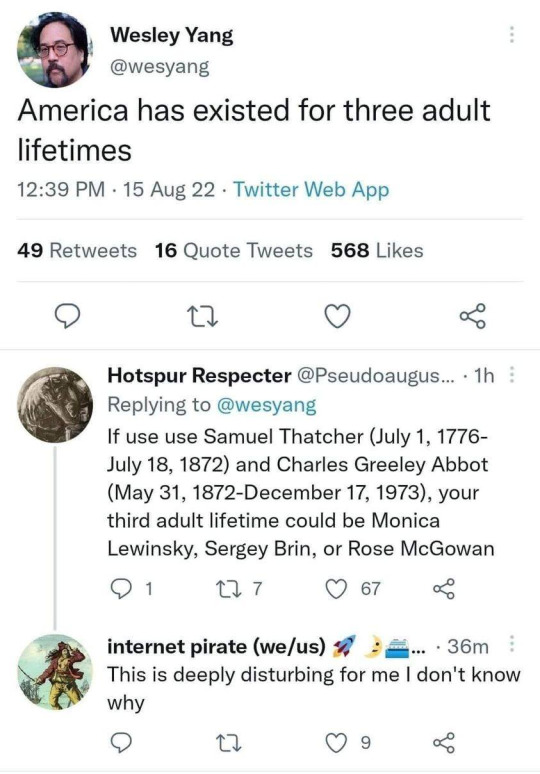
So, it’s actually even more recent than that. The longest-lived person in US history was a woman named Sarah Knauss, who lived from September 24, 1880 to December 30, 1999. When she was born, the US was 104 years old. It’s quite plausible that there would’ve been a few 104-year-olds alive at that point, meaning that the “third adult lifetime” would’ve started at almost the end of the 20th century! Someone born when Sarah Knauss died would only be 22 today!
Frustratingly, I can’t say with certainty that there were any 104-year-olds alive at that time. The 1880 census records do have a breakdown by age, showing the number of infants under 1, 1-year-olds, 2-year-olds, etc., up to 99, but then it has a single category for “100 and over”, listing 4,016 people in the US that year who were 100 or older, so it seems plausible that it included a few people 104+, but we can’t say for certain
If we exclude her, we find a woman named Margaret Skeete who lived from October 27, 1878 to May 7, 1994, or Ettie May Greene, who lived September 8, 1877 - February 26, 1992, both alternate contenders for that “second lifetime” (I used the Wikipedia List of American Supercentenarians for this, ordering the list by death date). Even if there weren’t any 104-year-olds, there would definitely have been 101-year-olds. So at any rate, that third lifetime is almost definitely some time in the 1990s
It’s unlikely to be later than Mrs. Knauss, but not impossible. A woman named Myrtle Dorsey (the 34th longest-lived American) died June 25, 2000, and was born November 22, 1885. It’s not impossible, but is unlikely, that there would’ve been anyone left alive at her birthdate who was alive on 7/4/1776, as they’d have to be 109 years old, a rare age to reach, especially in the 19th century, and then finally Maude-Farris Luse, who lived from January 21, 1887 to March 18, 2002, even less likely to have had someone alive from 7/4/1776 when she was born
30 notes
·
View notes
Text







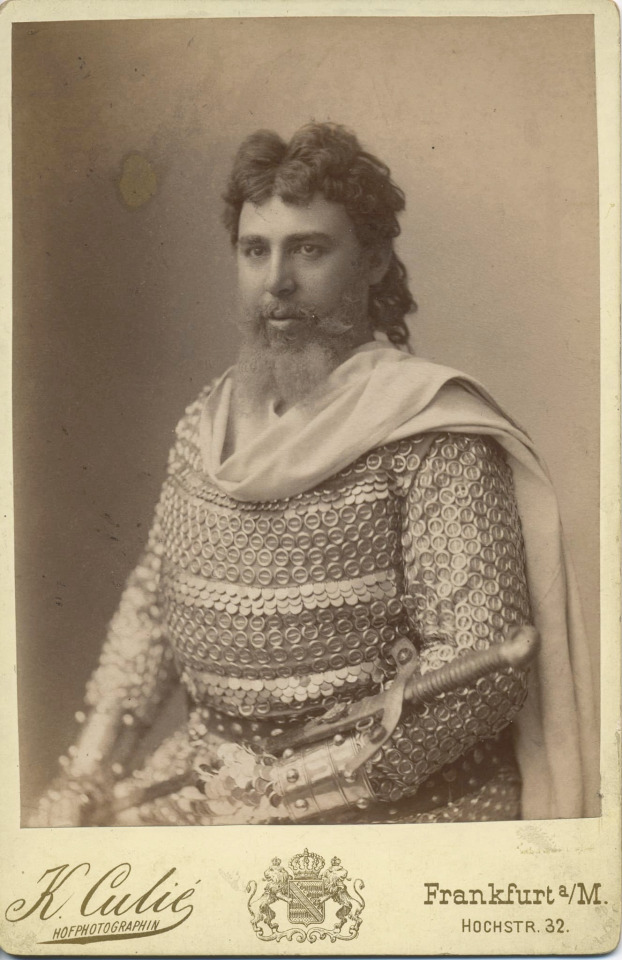





On June 10, 1865, the world premiere of "Tristan and Isolde" by R. Wagner took place in Munich.
„Isolde… wie schön…“
Here are some of the first tenors to have sung the role of Tristan over the years and contributed to the success of this work through their dedication.
Erik Schmedes (27 August 1868, in Gentofte, Denmark – 21 March 1931, in Vienna), Danish heldentenor.
Alois Pennarini (Vienna 1870 - Liberec, Czechoslovakia 1927), Austrian-Hungarian first spinto tenor then heldentenor.
Modest Menzinsky (29 April 1875 in Novosilky, Galicia - 11 December 1935 in Stockholm), Ukrainian heroic tenor.
Karl Kurz-Stolzenberg
Adolf Gröbke (May 26, 1872 Hildesheim - September 16, 1949 Epfach), German tenor.
Iwan Ershov (November 8, 1867 – November 21, 1943), Soviet and Russian dramatic tenor.
Alfred von Bary (January 18, 1873 in Valletta, Malta - September 13, 1926 in Munich), German tenor.
Alexander Bandrowsky (April 22, 1860 in Lubaczów - May 28, 1913 in Cracow), Polish Tenor.
Jacques Urlus (6 January 1867 in Hergenrath, Rhine Province – 6 June 1935 in Noordwijk, Netherlands), Dutch dramatic tenor.
Francesc Viñas (27 March 1863 – 14 July 1933), Spanish tenor.
Richard Schubert (Dessau, Germania; December 15, 1885 - Oberstaufen, Germania; October 12, 1959), German tenor.
Dr. Julius Pölzer (April 9, 1901 in Admont - February 16, 1972 in Vienna), Austrian tenor.
Giuseppe Borgatti (Cento, 17 March 1871 – Reno di Leggiuno, 18 October 1950), dramatic tenor. (with Magini-Coletti as Kurwenal)
Antonio Magini-Coletti (17 February 1855 – 21 July 1912), Italian baritone.
#opera#classical music#music history#bel canto#composer#classical composer#aria#tenor#classical studies#Tristan and Isolde#classical musician#classical musicians#musician#musicians#classical history#historian of music#history#maestro#chest voice#Tristan und Isolde#Richard Wagner#Wagner#classical singer#classical singing#opera history#music#classical
4 notes
·
View notes
Text
Remarkable Writers In Different Periods
Japanese Period
1. Julian Cruz Balmaceda

Julián Cruz Balmaceda, sometimes written Balmaseda, was a Filipino poet, essayist, playwright, novelist, journalist, and linguist who lived from January 28, 1885, to September 18, 1947. He produced a number of works in Spanish, English, and Filipino.
reference:
2. Jose Ma. Hernandez

Both a writer and a teacher, Jose Maria Hernandez. In America, he pursued acting and writing studies. His most well-known piece is the three-act historical drama Panday Pira.
the other plays Jose Ma wrote. Night Wind, Sunrise in the Farm, The Empty House, Prelude to Dapitan, and White Sunday are some of the plays by Hernandez that are based on the Bible.
The play White Sunday took home the literary Palanca Memorial Award.
reference: https://tl.m.wikipedia.org/wiki/Jose_Maria_Hernandez
Philippine Literature Period
1. Jose Carcia Villa

Jose Garca Villa was a Filipino poet, literary critic, short story writer, and painter who lived from August 5, 1908, to February 7, 1997. He was given the National Artist of the Philippines title for literature in 1973[2][3] and the Guggenheim Fellowship in creative writing by Conrad Aiken[4]. He is credited with introducing the "reversed consonance rhyme scheme" in poetry writing as well as the extensive use of punctuation, particularly commas, which earned him the moniker "Comma Poet"[5]. He wrote under the pen name Doveglion (derived from "Dove, Eagle, Lion") Another poet, E, also looked into these creatures. Villa is honored in the poem "Doveglion, Adventures in Value" by E. Cummings.[3]
reference: https://en.m.wikipedia.org/wiki/Jos%C3%A9_Garc%C3%ADa_Villa
2. Rodolfo Dato

Bicolano poet and educator Rodolfo Guevarra Dato. He produced tunes with an English sound. He became the dean of the University of Nueva Caceres and is Luis Dato's elder brother. He also published essays on Bikolnon culture. He compiled and edited Filipino Poetry, one of the most well-known anthologies of English poets, in 1924.
reference: https://bcl.m.wikipedia.org/wiki/Rodolfo_Dato
The New Society
1. Anciento Silvestre
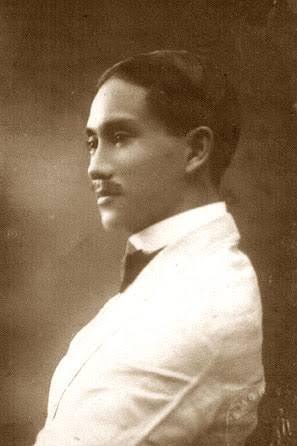
Despite not having received any formal training in writing, he was still able to produce beautiful poems, short stories, novels, and essays that contributed to the literature of the Philippines.
Eight categories in which his poems are categorized are found in the Nature collection: Free, Moving, Image of Life, Pulse of Love, Strong of Faith, Sign of Hope, Open to the Path of Greatness, and Blood in the Light of Sun.
Aniceto F. Silvestre won four First Prizes for his poetry before the war, a Third Prize for his work while under the Commonwealth government, a First Prize in the tenth year of the Republic of the Philippines, and a First Prize at the 1969 Palanca Memorial Awards for Literature.
reference: https://tl.m.wikipedia.org/wiki/Aniceto_Silvestre
2. Pelagio Cruz
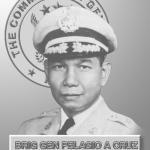
The first Chief-of-Staff from the Philippine Air Force to serve in the Armed Forces of the Philippines was Pelagio A. Cruz (June 16, 1912 – October 21, 1986).
reference: https://en.m.wikipedia.org/wiki/Pelagio_Cruz
The Period of Third Republic Philippines Literature (1965-1972)
1. N.V.M. Gonzalez
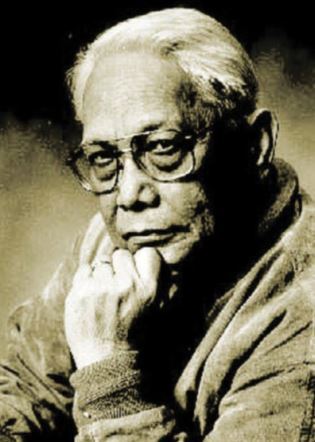
Gonzalez was a novelist and short story writer who is considered one of the pioneers of modern Philippine literature. His works often dealt with rural life and the struggles of the working class, and he was known for his vivid descriptions and lyrical prose. Gonzalez's contribution to Philippine literature was in his portrayal of the everyday lives of ordinary Filipinos, and his use of vernacular language and local settings in his writing.
reference: https://en.m.wikipedia.org/wiki/N._V._M._Gonzalez
2. F. Sionil Jose
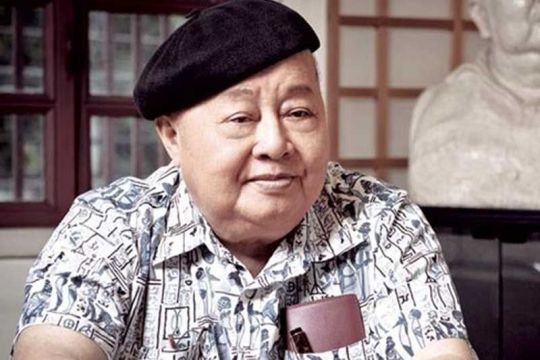
Jose was a novelist and journalist who is known for his epic historical novels that explore Philippine society and politics. His works often deal with issues of poverty, social injustice, and corruption, and he is considered one of the most important writers in Philippine literature. Jose's contribution to Philippine literature was in his critical examination of Philippine society and his efforts to expose the corruption and injustices that plague it.
reference: https://en.m.wikipedia.org/wiki/F._Sionil_Jos%C3%A9
Photo Credits:
1st Img:
https://www.google.com/search?client=ms-android-transsion&sxsrf=APwXEdeh3fEJ-aNLwLWVyG2H1Gu4KjrUOQ:1683042906425&q=julian+cruz+balmaceda&tbm=isch&sa=X&ved=2ahUKEwjV09C0_9b-AhVDEnAKHWLvAV8Q0pQJegQIDBAB&biw=360&bih=728&dpr=3#imgrc=rp-VeXX39fK64M&lnspr=W251bGwsbnVsbCxudWxsLG51bGwsbnVsbCxudWxsLG51bGwsbnVsbCxudWxsLG51bGwsbnVsbCxudWxsLG51bGwsbnVsbCxudWxsLG51bGxd
2nd Img:
https://www.google.com/imgres?imgurl=https%3A%2F%2Fupload.wikimedia.org%2Fwikipedia%2Fcommons%2F2%2F2d%2FJose_Maria_Hernandez_%2528cropped%2529.png&tbnid=lm88ETGpDRKXxM&vet=1&imgrefurl=https%3A%2F%2Fcommons.wikimedia.org%2Fwiki%2FFile%3AJose_Maria_Hernandez_(cropped).png&docid=m2shDy1ECOyezM&w=266&h=401&source=sh%2Fx%2Fim
3rd Img:
https://www.google.com/search?q=jose+garcia+villa&oq=&aqs=chrome.4.69i58j69i176j69i64j35i39i362i523l3j46i39i362i523l3j35i39i362i523l4j46i39i362i523l2.-1j0j4&client=ms-android-transsion&sourceid=chrome-mobile&ie=UTF-8#imgrc=CGPmkqI7nsXTDM&lnspr=W251bGwsbnVsbCxudWxsLG51bGwsbnVsbCxudWxsLG51bGwsbnVsbCxudWxsLG51bGwsbnVsbCxudWxsLG51bGwsbnVsbCxudWxsLG51bGxd
4th Img:
https://www.google.com/imgres?imgurl=https%3A%2F%2Fluisgdato.com%2Fwp-content%2Fuploads%2F2020%2F05%2Frodolfo-guevara-dato-3.jpg&tbnid=6co6Mp93mhvXlM&vet=1&imgrefurl=https%3A%2F%2Fluisgdato.com%2Frodolfo-dato-biography%2F&docid=BZolhF-r1zKphM&w=925&h=1325&hl=en-US&source=sh%2Fx%2Fim
5th Img:
https://www.google.com/imgres?imgurl=http%3A%2F%2F4.bp.blogspot.com%2F-xckfea8CKj4%2FVrCzk2-6H1I%2FAAAAAAAAALM%2FQzTFcn_ejt8%2Fs1600%2Fjcdejesus1.jpg&tbnid=S42XqT0Xi85r_M&vet=1&imgrefurl=http%3A%2F%2Fbsit1a-pilipinas-sining-panitikan.blogspot.com%2Fp%2Fblog-page.html&docid=MGnu2VpXdvHzFM&w=297&h=446&source=sh%2Fx%2Fim
6th Img:
https://www.google.com/search?client=ms-android-transsion&hl=en&sxsrf=APwXEdceZGInGd3oc8u6oiLdBIktPtTZGw:1683044736143&q=pelagio+sulit+cruz&tbm=isch&sa=X&ved=2ahUKEwi7642dhtf-AhVRx2EKHcgcB6AQ0pQJegQIDRAB&biw=360&bih=728&dpr=3#imgrc=rjS6raSke0zKcM&lnspr=W251bGwsbnVsbCxudWxsLG51bGwsbnVsbCxudWxsLG51bGwsbnVsbCxudWxsLG51bGwsbnVsbCxudWxsLG51bGwsbnVsbCxudWxsLG51bGxd
7th Img:
https://www.google.com/imgres?imgurl=https%3A%2F%2Fenglish.colostate.edu%2Fwp-content%2Fuploads%2Fsites%2F56%2F2017%2F10%2FNVM-Gonzales.jpg&tbnid=mgz3WQDMC0ln0M&vet=1&imgrefurl=https%3A%2F%2Fenglish.colostate.edu%2Fnews%2Ffilipino-american-history-month-n-v-m-gonzalez%2F&docid=UDb9tMnz-nafBM&w=315&h=442&hl=en-US&source=sh%2Fx%2Fim
8th Img:
9th Img:
3 notes
·
View notes
Text
February 21
On this day in
1828 – Initial issue of the Cherokee Phoenix is the first periodical to use the Cherokee sylllabary invented by Sequoyah
1848 – Karl Marx and Friedrich Engels publish The Communist Manifesto
1885 – The Washington Monument is dedicated
1925 – The New Yorker publishes its first issue
1965 – Malcolm X is killed
Born on this day in
1621 Rebecca Nurse, executed as a witch in 1692
1921 – John Rawls
1924 – Dorothy Blum
1933 – Nina Simone
1946 – Alan Rickman
1962 – David Foster Wallace
Died on this day in
4 AD – Gaius Caesar
2019 – Peter Tork
2 notes
·
View notes
Text













The newly completed Washington Monument was dedicated on February 21, 1885.
#Washington Monument#dedicated#21 February 1885#anniversary#US history#National Mall#US Capitol#Reflecting Pool#architecture#landmark#cityscape#tourist attraction#original photography#summer 2009#Washington DC#Robert Mills#Ulysses S. Grant Memorial#public art#sculpture#tree#flora#nature#travel#vacation#USA#White House
0 notes
Text
Angola Independence Day
1482
1484
1 February 1575
26 August 1641
21 August 1648
*14 February 1885*
*15 August 1914*
15 October 1926
1950
*11 June 1951*
1954
10 December 1956
1960
4 February 1961
5 April 1962
13 March 1966
25 April 1974
10 August 1974
7 September 1974
15 January 1975
1 August 1975
10 November 1975
11 November 1975
1 January 1976
22 November 1976
1989
1990
1991
25 August 1992
4 April 2002
18 February 2010
0 notes
Text
The history of the History Center, Part II
By Jonathan Monfiletto

A trustee of the Yates County History Center once asked me to look into the happenings of the History Center from the time it was founded in 1860 as the Yates County Historical Society until it was re-chartered in the 1920s as the Yates County Genealogical and Historical Society. My answer back to him was, indeed I could not find much of a record of activity of the historical society from about the mid-1880s until the late-1920s when the organization was re-formed.
In fact, from its incorporation on February 4, 1860, the Yates County Historical Society – despite being founded and operated by some of the pioneers of the county and their descendants – seems to have petered out rather quickly. Within a quarter of a century, the organization may have gone dormant – or it may just not have been as active and noticed in the community as it once was.
A newspaper notice dated December 18, 1885 states: “Why not reorganize the Yates County Historical Society? … We should be very glad to see this society placed on solid footing. There is a vacancy in the office of President. Important work could and ought to be done this winter. What say the members of the Society to a thoro [sic] organization.” However, an article in the Penn Yan Express of May 11, 1887 carries the proceedings of the Historical Society’s annual meeting, so perhaps the latter statement in the last sentence of the above paragraph is the true one.
Still, the Historical Society did apparently go dormant or extinct over the next 20 years or so. Beginning November 29, 1907, the Rushville Chronicle (whose content largely seems to duplicate that of the Yates County Chronicle) put calls out for the group. “If some of the people of Penn Yan would get together and call a meeting for the organization of a Yates County Historical Society there are a number of interested citizens of Jerusalem who would gladly join in such a commendable enterprise,” the first notice states. “Many interesting and important matters would thus be conserved, and new developments would be brought to light that are in the background, and which would be of inestimable value. The shadows of time too swiftly obliterate the footprints of our race. Every township in Yates county is storied with a rich fund of local history, wanting only the patient research of one who loves the work of developing the facts, to render a service of signal gratification to many people of the present period and of greater moment to succeeding generations, as the only means of any information of the people and events of the past upon the soil and scenes of the newly inhabitants. Every true man has a just pride in his ancestral domain, and will treasure its history, if developed, and perpetuate it as an heir loom [sic]. Who will start the nucleus in Penn Yan? Other counties have flourishing Historical Societies. Why not our own loved Yates?”
On March 27, 1908, the Rushville Chronicle (and probably the Yates County Chronicle) asserted: “Yates county furnishes abundant material to warrant the organization of a historical society. Little Yates is rich in tradition, in incident and in interesting experiences. … We trust the matter of organizing a Yates County Historical Society will receive active encouragement. There are an abundance of reasons why it should exist.” In response, on April 10, 1908, Miles A. Davis wrote to the newspapers: “I, for one, most heartily approve your recent suggestive article for the organization of a Yates County Historical Society. There is a wealth of historical material in every township which can be developed and conserved through organization, with stated meetings and suitable quarters.”
Nearly a decade later, the Rushville Chronicle of September 22, 1916 recites a story that “was reported at a meeting of the Yates County Historical Society,” though an article in the newspaper on December 21, 1917 seems to indicate the society was in the process of being organized. Yet, this process appears to have taken place in fits and starts, as the Rushville Chronicle of July 18, 1919 put out another call: “Do we wish to forget? Are we going to allow all of our traditions to fade away and be gone because we are too dull, or stupid, or indifferent to realize the value of a past which is wondrously rich in good things, and from which we constantly may draw healthful inspiration? We hope and believe not. And because we believe the undercurrent of devotion to that which has gone before us is strong and steady, we want to see a Yates County Historical Society organized.”
More fit and starts happened over nearly another decade, until the pace of the processed seemed to pick up in the late 1920s. The Chronicle Express of September 9, 1926 reports, “A number of citizens of Yates county during the past few weeks have been urging the organization of a county-wide historical society to preserve the many articles and relics of great historic value which are now in the county but which may at any time be lost.” On December 8, 1927, the newspaper reported a board of directors for the historical had been named. An advertisement a few months later on February 16, 1928 sought suggestions for a new name for the organization. Apparently, the Yates County Historical Society was an organization still chartered by the New York State Education Department, but its reincarnation could not charter itself under that name.
“Inasmuch as this organization has long been inactive, attempts were made to have the new organization substituted for the old. The department has refused to do this. Furthermore, the old membership corporation cannot be dissolved since there are no living members,” the item reads. “The new organization is therefore anxious to secure another name that will be appropriate and seeks the help of the public in securing a proper title.” This is apparently the moment when the Yates County Genealogical and History Society – the addition of an extra word constituting a new name for a new organization – was born. Indeed, the Penn Yan Democrat of January 11, 1929 notes the organization had received a charter under that name. In a letter in the Democrat on December 6, 1929, Society President Herbert D. Winters outlined the mission and objectives of the new historical society.
According to The Chronicle-Express of February 12, 1931, YCGHS held its annual meeting in its new museum space inside the Penn Yan Public Library, “giving the members of the society their first opportunity of enjoying the newly painted room, and of seeing the four new display cases and the several interesting historic articles already given or loaned for display.” Whether the historical society of 1860 had any kind of public museum space, this may have marked the first time YCGHS – or YCHS before it – had such a room. Subsequent newspaper articles reveal historical artifacts donated to YCGHS and its museum, including items connected to the Public Universal Friend.
In September 1942, it was reported the Oliver family had donated its home on the corner of Main and Chapel streets in the village of Penn Yan to the village as a community house, museum, and reading room. However, it wasn’t until January 1946 that YCGHS took action toward occupying space in what has become known as the Oliver House Museum. Then, the historical society would use the two north rooms on both the first and second floors for storage and display of historical artifacts, moving the museum collection from the library to the Oliver House. The village would make other rooms available to the organization as necessary, as other community groups shared the space inside the home built in the mid-19th century. Even then, it wasn’t until July 25, 1948 that YCGHS opened its new museum to the public, opening the space twice a week.
Starting October 1, 1949, the village trustees hired full-time custodians – Mr. and Mrs. Walter Abel – who lived in an apartment in the rear of the house and took responsibility for caring for the building. At the time, the Penn Yan Chamber of Commerce, the Penn Yan Recreation Commission, and the Yates County Red Cross had offices inside the home in addition to YCGHS’s museum. Starting July 1, 1963, the museum was open every day from 1:30 to 4 p.m. and seems to have taken on more space in the Oliver House. The basement contained displays of Native American artifacts, early carpentry and barrel making tools, and early Penn Yan fire equipment, while the attic featured displays of artifacts associated with homes, farms, and early grocery stores. On the second floor were arranged more than 200 early photographs of Penn Yan and Yates County.
In The Chronicle-Express of July 3, 1969, YCHGS advertised it had “four floors of interesting and valuable exhibits” that were available for public viewing on Tuesday and Thursday afternoons the last Saturdays of July and August, indicating the organization had taken on almost the whole of the space inside the Oliver House. In addition to the basement displays, there was a room dedicated to the Oliver family who built and lived in the home, a room highlighting the Public Universal Friend, and a room with local history books along with a collection of toys and dolls, a display of military paraphernalia, and other exhibits. In November 1974, the members of YCGHS met for the first time in three years for an open house at the Oliver House to plan a re-opening event the following May to show the public the renovations the village had completed on the building.
In February 1990, two rooms on the second floor that comprised the research suite were named in honor of Frank L. Swann, a former YCGHS president and a former Yates County historian. “Much of the research material now available in this room came from Swann’s extensive personal collection of local history files, donated to YCGHS in 1987 [the year Swann died],” an article in The Chronicle-Express notes. In August 2004, members of YCGHS opened the L. Caroline Underwood Museum next door on Chapel Street to the Oliver House Museum, in honor of the longtime Penn Yan Academy teacher who loved traveling, collecting, and history.
What is now known as the Yates County History Center celebrates 164 years since its original incorporation this week. Its mission remains to collect, preserve, and interpret the history of Yates County, increasing knowledge and understanding of the history for the betterment of present and future generations.
#historyblog#history#museum#archives#genealogy#american history#us history#local history#newyork#yatescounty#pennyan#historical#historicalsociety#genealogical#yatescountyhistoricalsociety#yatescountygenealogicalandhistoricalsociety#yatescountyhistorycenter#oliverhousemuseum#lcarolineunderwoodmuseum#newspapers
0 notes
Text

Sacha Guitry, February 21, 1885 - July 24, 1957.
Photo by Raymond Voinquel.
28 notes
·
View notes
Text
February 21, 1885 – United States President Chester A. Arthur dedicates the Washington Monument
youtube


1 note
·
View note
Text
Five steps of Wikipedia for Sunday, 13th August 2023
Welcome, Benvenuto, 안녕하세요, Willkommen 🤗
Five steps of Wikipedia from "List of electroacoustic composers of color" to "4528 Berg". 🪜👣

Start page 👣🏁: List of electroacoustic composers of color
"A list of notable electroacoustic music, experimental electronic, electronic noise music, electronic sound art, and acousmatic composers:..."
Step 1️⃣ 👣: Carlos Jiménez Mabarak
"Carlos Jiménez Mabarak (January 31, 1916 in Tacuba, Mexico – June 21, 1994 in Mexico City) was one of the most prolific Mexican composers of the 20th century. His music belongs to the transition from the Mexican Nationalism to the Avant garde and uses all musical genres. He composed in a period of..."
Step 2️⃣ 👣: Carlos Chávez
"Carlos Antonio de Padua Chávez y Ramírez (13 June 1899 – 2 August 1978) was a Mexican composer, conductor, music theorist, educator, journalist, and founder and director of the Mexican Symphonic Orchestra. He was influenced by native Mexican cultures. Of his six symphonies, the second, or Sinfonía..."

Image by Carl van Vechten
Step 3️⃣ 👣: Alberto Ginastera
"Alberto Evaristo Ginastera (Catalan pronunciation: [alˈβeɾto eβaˈɾisto dʒinasˈteɾa]; April 11, 1916 – June 25, 1983) was an Argentinian composer of classical music. He is considered to be one of the most important 20th-century classical composers of the Americas...."
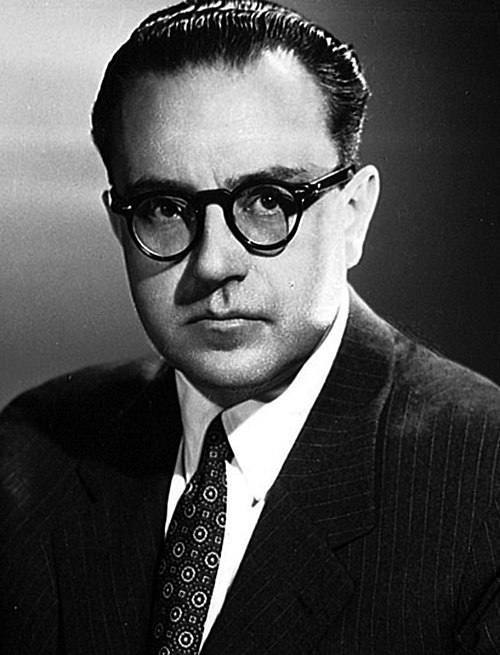
Image by Annemarie Heinrich
Step 4️⃣ 👣: Alban Berg
"Alban Maria Johannes Berg ( BAIRG, German: [ˈalbaːn ˈbɛʁk]; 9 February 1885 – 24 December 1935) was an Austrian composer of the Second Viennese School. His compositional style combined Romantic lyricism with the twelve-tone technique. Although he left a relatively small oeuvre, he is remembered as..."

Image by Max Fenichel
Step 5️⃣ 👣: 4528 Berg
1 note
·
View note